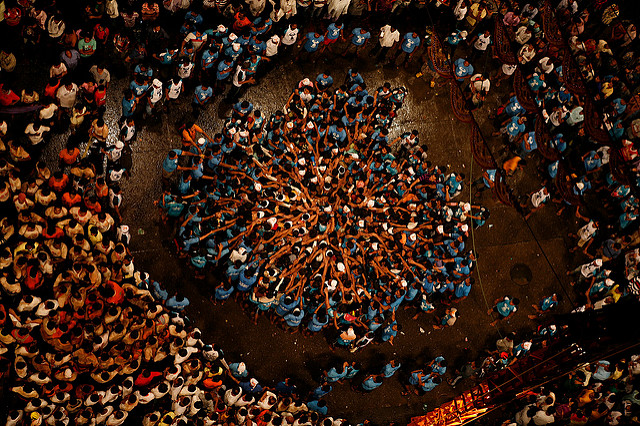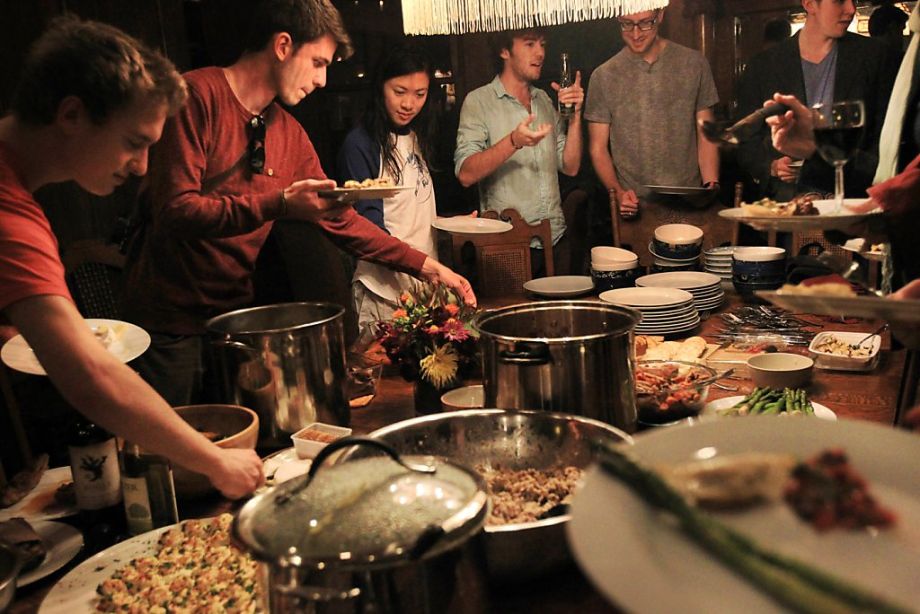A co-living dinner. Photo credit: OpenDoor.
As we’ve seen with the ever-growing popularity of the co-working movement, there’s a strong desire for people to work and live in connected communities. The consulting firm Emergent Research estimates that 15,000 new coworking spaces will open around the world between now and 2020. Co-living spaces, in which people share housing and related responsibilities, is on a similar trajectory, fueled in part by rising apartment rents and home ownership costs around the globe. Leading the co-housing movement are businesses such as the Embassy Network, OpenDoor, WeLive, Common, Roam, and Base.
To ensure sustainable growth of co-living spaces, it’s important to focus on community management. I’ve put together the top three ways to co-create a vibrant culture with your community based on the research I’ve done for my new book, Modern Tribe.
This year, we’ve seen Mutual Aid in Motion.
From scaling sharing hubs to Mutual Aid 101 trainings, we’re helping communities build the tools they need.
Every dollar fuels lasting resilience – proving that when we move together, we all move forward.
1. Hold a Common Story

A group ritual before the climb for Dahi Handi in Thane, India. Performed before every climb as a vow before action. Creating collective meaning and purpose. Photo credit: Sandeepachetan.
When we communicate, we sometimes don’t hear what the other person says. We hear what our mind perceives what they’ve said. I’ve observed and experienced many conflicts in relationships that simply come down to a misunderstanding in our communication.
If we are living or working closely with people, simple misunderstandings can lead to big outbreaks and unnecessary tension. This is why you will notice most tribes or ancient collectives had myths or stories around their communities, representing a tool to bond the community together through common understanding. They also had ritual or simple experiences that helped people embody the stories or messages in them.
When we hear a story or see an object, we see the association or meaning we’ve placed to it. Ancient tribes used these experiences to build a strong mutual understanding of the stories to ensure that there was common meaning or guiding principles in the community. This way, regardless of what is said or what words are used, they come from this place of understanding.
At Base, the organization I am guiding to develop Australia’s first urban co-living model, we are beginning to run weekly “social fabric weaving” gatherings centered around our core pillars to start shaping our culture and inviting others in.
Try It Out:
Invite the members of your community to co-create a list of five guiding principles that you feel would suit the function of your collective. For example: Listening before speaking or expressing creativity openly and accepting without judgement.
Get creative and design a workshop or experience that you could lead people through to give them a sense of these principles. For example, you can have everyone sit in a circle to engage in active listening and open dialogue, share something creative, and practice non-judgement.
Make sure you, as a facilitator or guide for the community, intentionally and actively embody these principles in all meetings, events, and activities you run. This needs to be done with integrity and not simply for the sake of “having a culture.”
2. Create Space for Regular Check-ins

Whether it’s in your space or outside, simply create a regular intentional time to have an open dialogue together. Photo credit: unsplash.com.
Whether you are living together or working together, tension builds. This is inescapable and can only be managed well. If you look back at conflicts that arise in communities or teams, you will find that often the underlying issue is a communication error — lack of communication, unclear communication, or avoidance completely. Most of the time, it will be something that goes unsaid because someone doesn’t feel completely safe in expressing their views. Give people the space and invitation to share these things.
Create a very intentional and casual space weekly to be present and honest with each other, and share all that is working and not working.
Try It Out:
Make sure there is a facilitator who is prepared to hold the circle, set the expectations, and guide the conversations. Invite everyone to an informal dinner or gathering. A potluck dinner, picnic, or simply gathering will be fine, as long as there is the intention to be present with each other and share. Set a clear expectation that everyone will listen without arguing, giving answers, or sorting out other’s problems for them. Give each person the opportunity to share what is working for them and what can be improved. After each sharing session, invite those who have a non-judgemental view to weigh in on what was said.
With open dialogue like this, simply continue sharing, listening, and feeding back until a solution is reached. Most of the time, though, simply being heard is enough to dilute any conflict.
3. Create Space for Regular Checkouts

Learning and practicing permaculture on a rural farm would be a great retreat from the space! Photo credit: planet a.
Much like in a relationship with a loved one, you need to create some space between you and your partner to keep the initial spark alive, to keep that initial polarity between you energized. A culture can become stale and heated very quickly without fresh energy or inspiration in the space. This is even more important if you would like to foster a culture of ideas, creativity, and inspiration in your space.
One popular way of doing this is to create the opportunity to support a local organization or give back in a way that can really energize people. Similar to as you see in yoga ashrams in India and abroad, invite members to perform karma yoga or selfless service while they’re away. Maybe they help out on the farm, in the kitchen, or some other place.
Doing activities like this will renew members’ abilities to be present with others and listen deeply, so that communication is clear and open and the community can flow with more ease.
Try It Out:
- Ask your members where they would be excited to go for a short getaway retreat and schedule a trip.
- Partner with a local farm or a retreat center and send members to work on the farm or give back in some way.
Remember that, to weed the garden, we don’t stand inside the window and talk about it. We get our hands in the soil and dirty. Culture is something that is alive, all the time. With intention, insight, and action you can craft it into something that will truly set your community or organization apart.
Try these three ideas out and let me know how it goes. Also, I invite you to check out my new book, Modern Tribe, to learn more.

